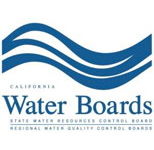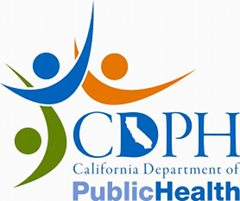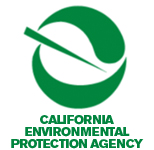
What Is Water Quality ?
Water quality is the chemistry, biology, and appearance of water used for recreation, agriculture, industry, washing and bathing, and drinking (ingestion). Safe water has sufficiently low concentrations of impurities and contaminants such as bacteria, viruses, pesticides, petroleum products, and dissolved minerals to be harmless for the intended use, but may not have appealing physical characteristics. A human immune system, however, can be undeveloped (i.e., infants) or compromised (e.g., elderly, illness) to the extent that the individual’s health may be susceptible to safe water (tap water).
Water quality is affected by natural sources of pollution, including
- radon
- fluoride
- arsenic
- mercury
- heavy metals
- radionuclides
- micro-organisms
- nitrates and nitrites
and human sources of pollution, including
- landfills
- piping lead solder
- cattle lots and dairy farms
- underground storage tanks
- industrial and household wastes
- agricultural fertilizers and pesticides
- private sewage disposal (septic tanks)
How Is Water Quality Regulated ?
 Drinking water statutes are codified in the Code of Regulations – Title 17 and 22 – Corporations Code, Education Code, Food and Agricultural Code, Government Code, Health and Safety Code, Public Resources Code, and Water Code. Regardless of the water’s source (e.g., wells, rivers, lakes), public tap water is filtered to remove impurities and treated to kill microbes. Water used for industry, farming, and recreation typically has multiple safety standards ranging from ingestion (Maximum Contaminant Levels ) to irrigation (recycled water ). Federal storm water runoff regulations (National Pollution Discharge Elimination System) mandates filtering of rainwater from impervious surfaces (e.g., roofs, hardscaping, roads) and agricultural land before it reaches the waters of the United States (e.g., rivers, lakes, estuaries).
Drinking water statutes are codified in the Code of Regulations – Title 17 and 22 – Corporations Code, Education Code, Food and Agricultural Code, Government Code, Health and Safety Code, Public Resources Code, and Water Code. Regardless of the water’s source (e.g., wells, rivers, lakes), public tap water is filtered to remove impurities and treated to kill microbes. Water used for industry, farming, and recreation typically has multiple safety standards ranging from ingestion (Maximum Contaminant Levels ) to irrigation (recycled water ). Federal storm water runoff regulations (National Pollution Discharge Elimination System) mandates filtering of rainwater from impervious surfaces (e.g., roofs, hardscaping, roads) and agricultural land before it reaches the waters of the United States (e.g., rivers, lakes, estuaries).
How Are The Physical Properties Of Water Quality Improved ?
In addition to health qualities, water has physical qualities (secondary Maximum Contaminant Levels ), including
- odor
- color
- turbidity
- dissolved solids
- taste and temperature
 While water’s physical qualities generally are not health hazards, they are vital components of water’s usability, including the effectiveness of soap, scale build-up in water heaters, sensory appeal for drinking. The most common causes of poor physical quality are dissolved minerals which cause the hardness in well water from calcium and magnesium in the ground aquifer, the alkalinity of river and lake water from limestone in the watershed, and the salinity of river water from ocean intrusion in deltas.
While water’s physical qualities generally are not health hazards, they are vital components of water’s usability, including the effectiveness of soap, scale build-up in water heaters, sensory appeal for drinking. The most common causes of poor physical quality are dissolved minerals which cause the hardness in well water from calcium and magnesium in the ground aquifer, the alkalinity of river and lake water from limestone in the watershed, and the salinity of river water from ocean intrusion in deltas.
Bottled water companies typically control physical qualities by distilling the water, which removes all contaminants and ions including municipal chlorination, and adding-back some dissolved solids. Household water softeners which use salt filtering may be a health hazard from added sodium and decreased calcium and magnesium in an occupant’s diet.
How Is The Water Quality Of Private Wells Regulated ?
The Environmental Protection Agency does not regulate private water wells. California uses about 20% of all groundwater in the US, mostly for agricultural irrigation. About one-half of Californians get their drinking water from wells. Of that, 1.4 million residents get their drinking water from 600,000 private wells. Domestic well purity treatment systems include activated alumina filters, activated charcoal filters, air stripping, anion exchange, chlorination, reverse osmosis, ozonation, and ultraviolet radiation.
Cities and counties in California have authority to adopt state well standards monitored. 39 of California’s 58 counties and one-third of tis 429 cities have adopted well standards, which may be more stringent for local conditions. For those who have not, the Regional Water Quality Boards have adopted minimum state standards for them.
It is the responsibility of the well owner to ensure that their domestic well water is safe. Private well drilling and abandonment (only by C57 contractors) and septic systems are regulated by cities or counties. Private wells near landfills, industry, dry cleaners, gas stations, and/or automobile repair shops should test for volatile organic compounds, metals, total dissolved solids, and petroleum hydrocarbons. Private wells near agricultural and livestock areas should test for pesticides, nitrate, bacteria, and total dissolved solids. Commercial testing laboratories are certified by the state.
Links
BUILDING in CALIFORNIA
California Plumbing Code Chapter 16
- Alternate water sources for non potable water. Local public health departments shall seek consultation on local ordinances or standard pursuant to California Water Code 14877.3
- For R1 and R2 occupancies the statewide criteria for disinfected tertiary recycled water shall meet the provisions of California Code of Regulations. Title 22, section 60301.230
- Onsite non-potable treated gray water shall meet NSF 350 requirements.
- Water treatment is not required for gray water used for sub surface/subsoil irrigation or disposal field.
US Geological Survey
US Environmental Protection Agency
- California Drinking Water
- Local Drinking Water Information
- Pocket guide to drinking water quality
- Public Drinking Water Systems Programs
- Private Drinking Water Wells
California Department of Public Health
- Drinking Water Program
- Drinking Water Regulations
- Drinking Water statutes
- Fluoridation By Public Water Systems
- Public Drinking Water Systems
- reclaimed water regulations-01-2009
- water-Related Activities
- Reclaimed Graywater-Fall 2009
- Recycled and drinking water standards. (DWR)
- California Department of Water Resources
- Groundwater
- DWR Well standards
- CA DWR Recycled water policy and regulation
- Water reuse. Title 22
- Department of Water Resources-groundwater and wells
California Water Resources Control Board
- Private Domestic Wells
- porter-cologne act
- Guide for Private Domestic Well Owners
- Reclaimed Water regulations_
- National Pollution Discharge Elimination System
Other Links:
- National Ground Water Association
- Pocket Guide to Protecting Your Drinking Water
- Treatment Technology Report for Recycled Water December 2009
- Water Quality Association
- Water Well Design and Construction (UC Davis)
- Alameda County Well Information (Alameda County Public Works Agency)
